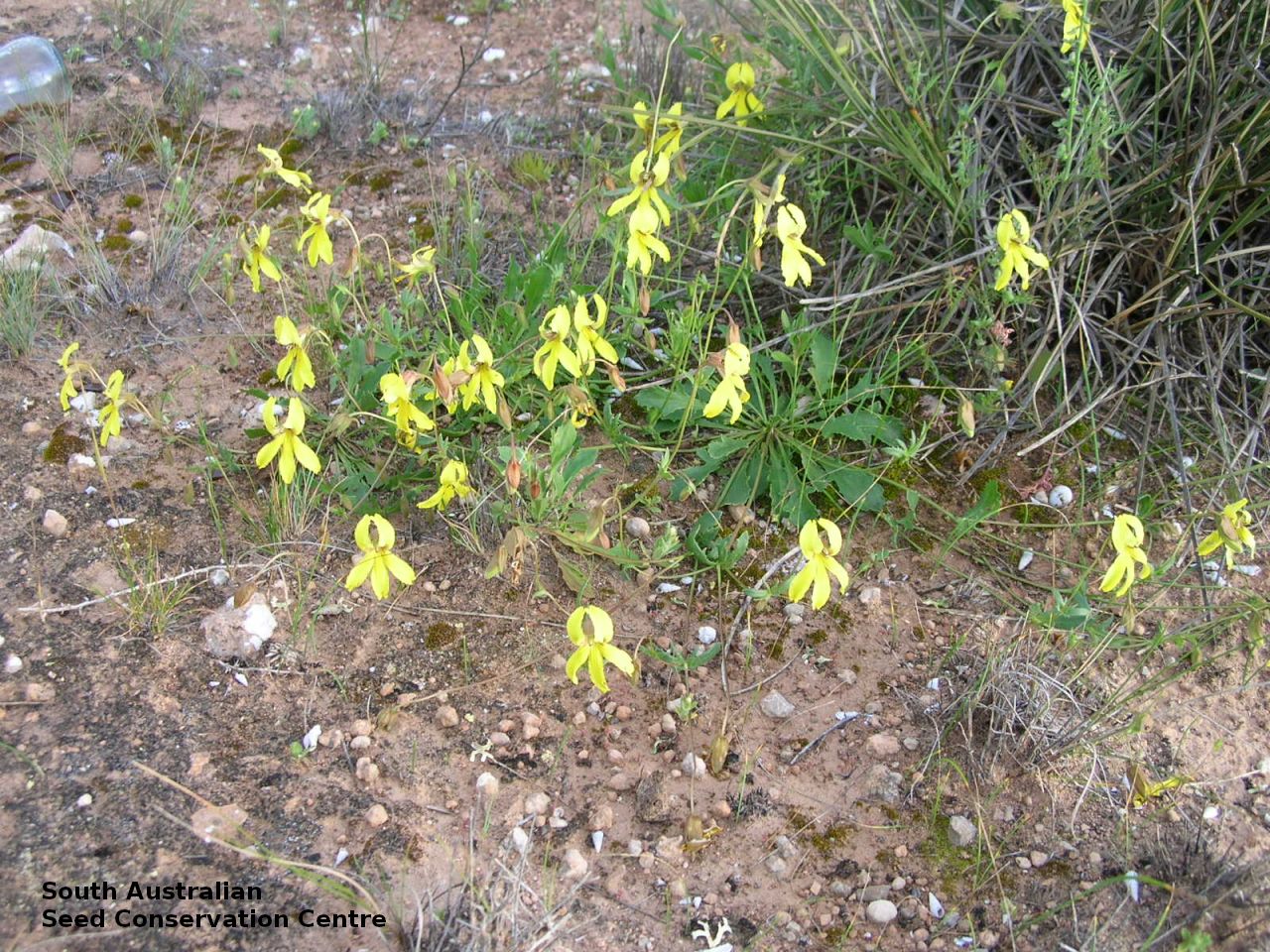
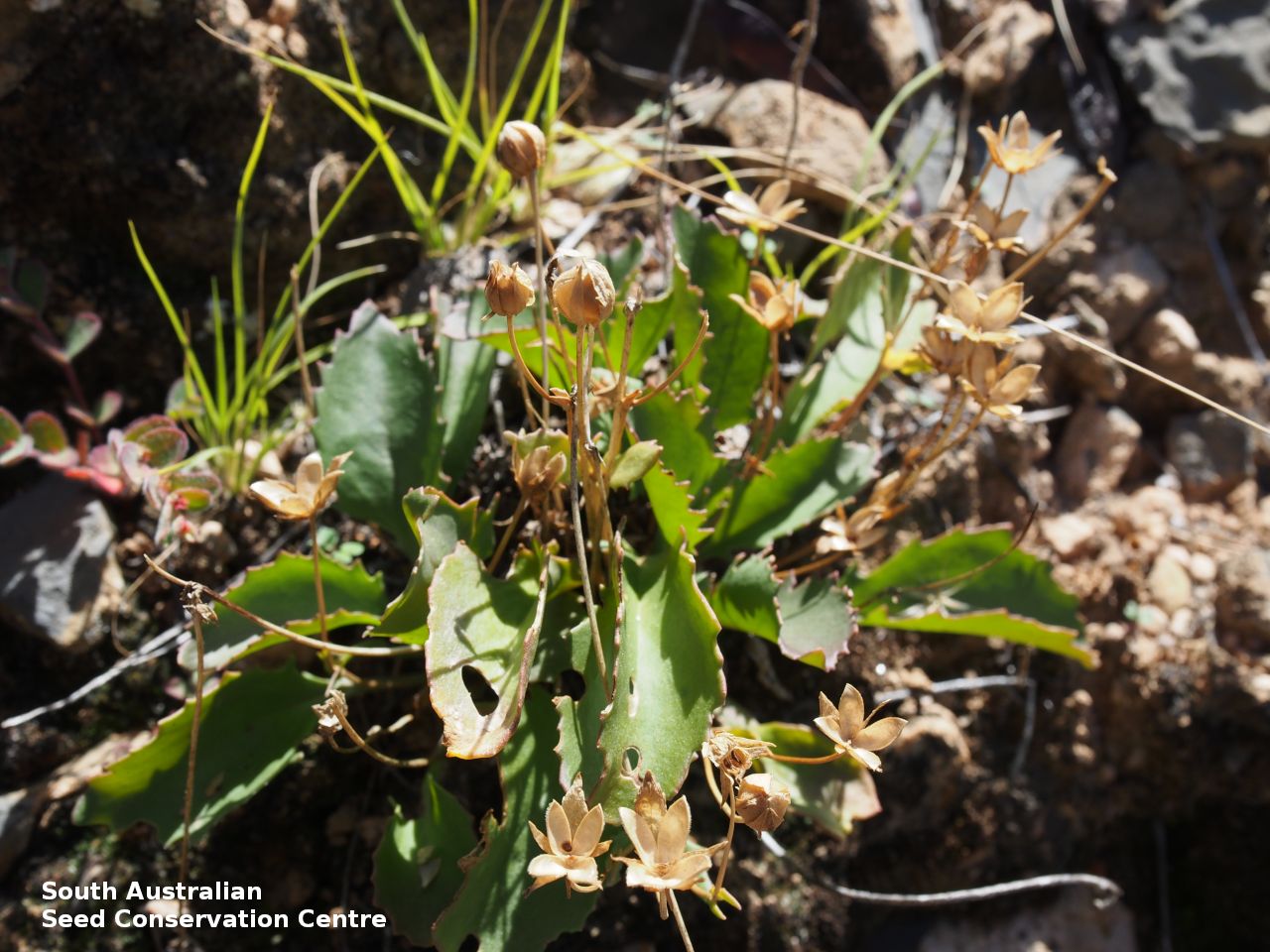
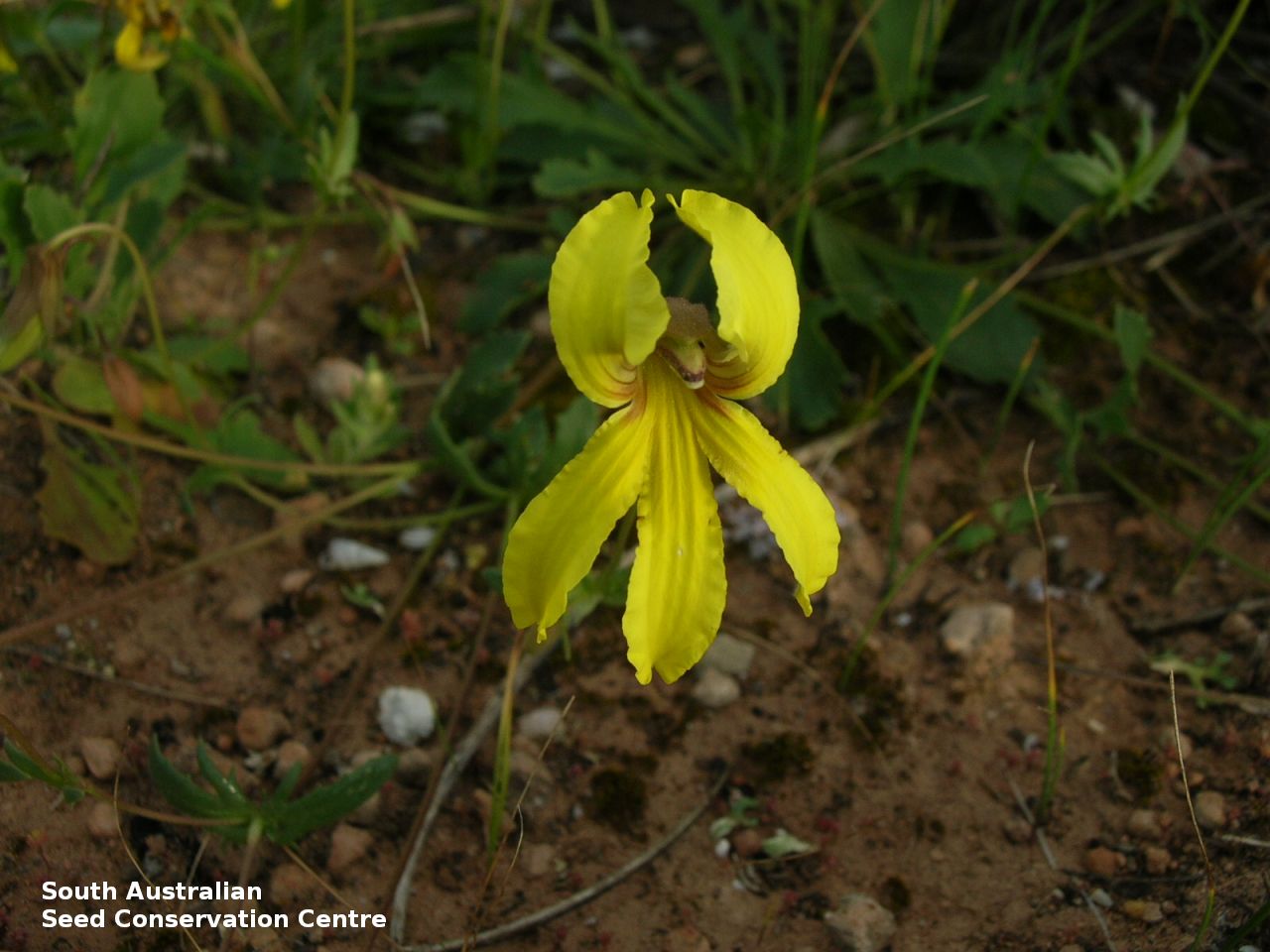
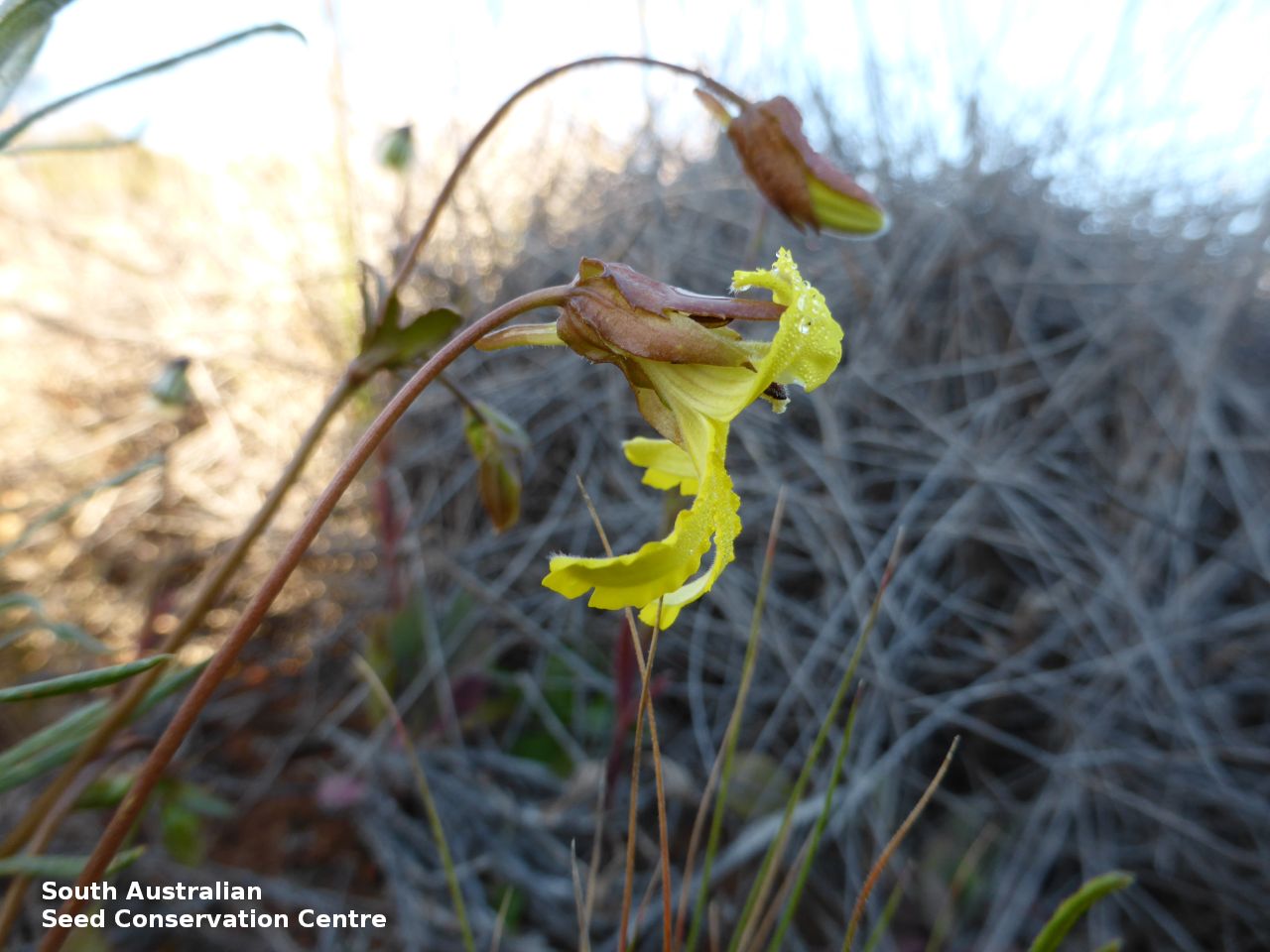
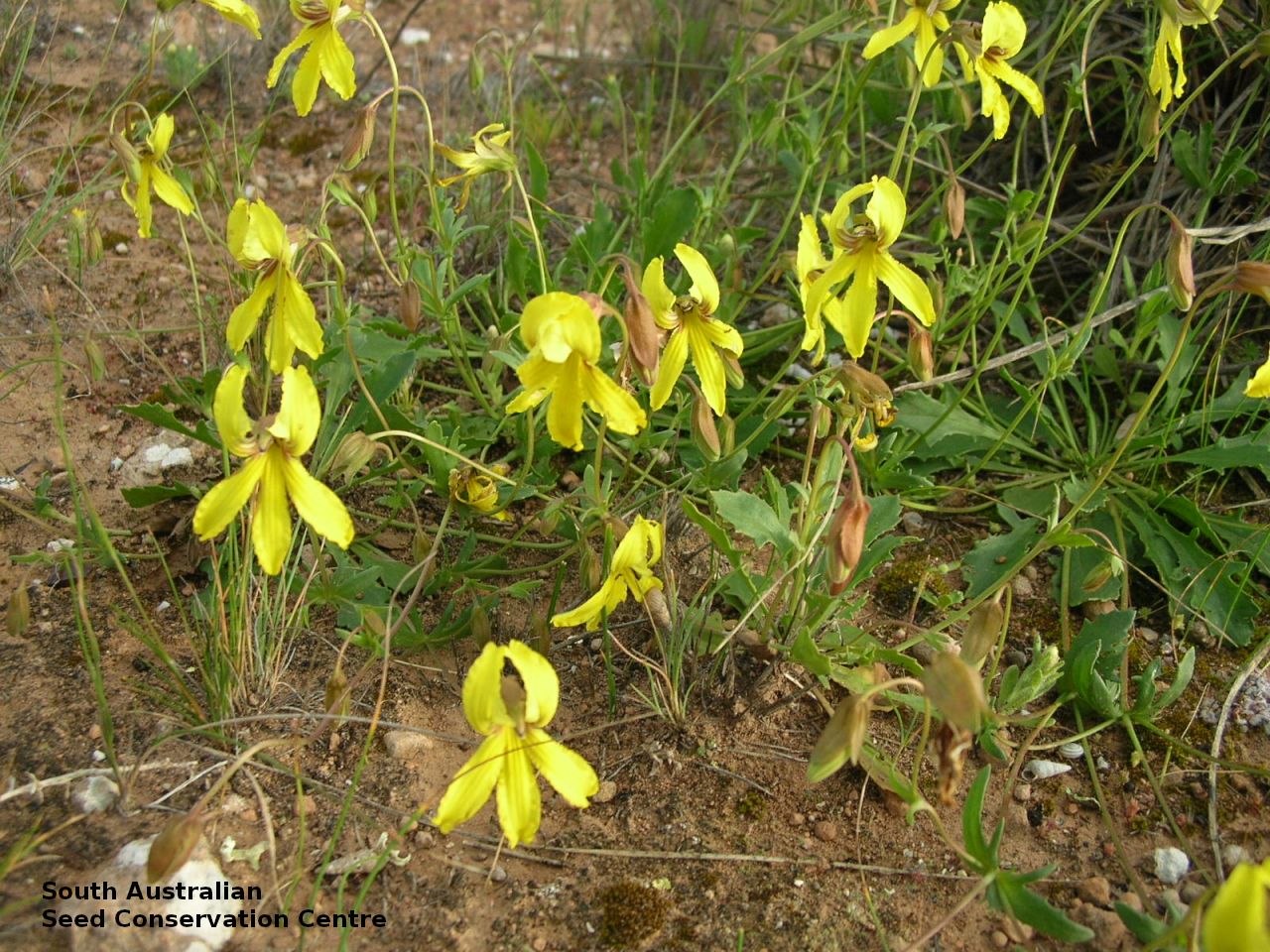
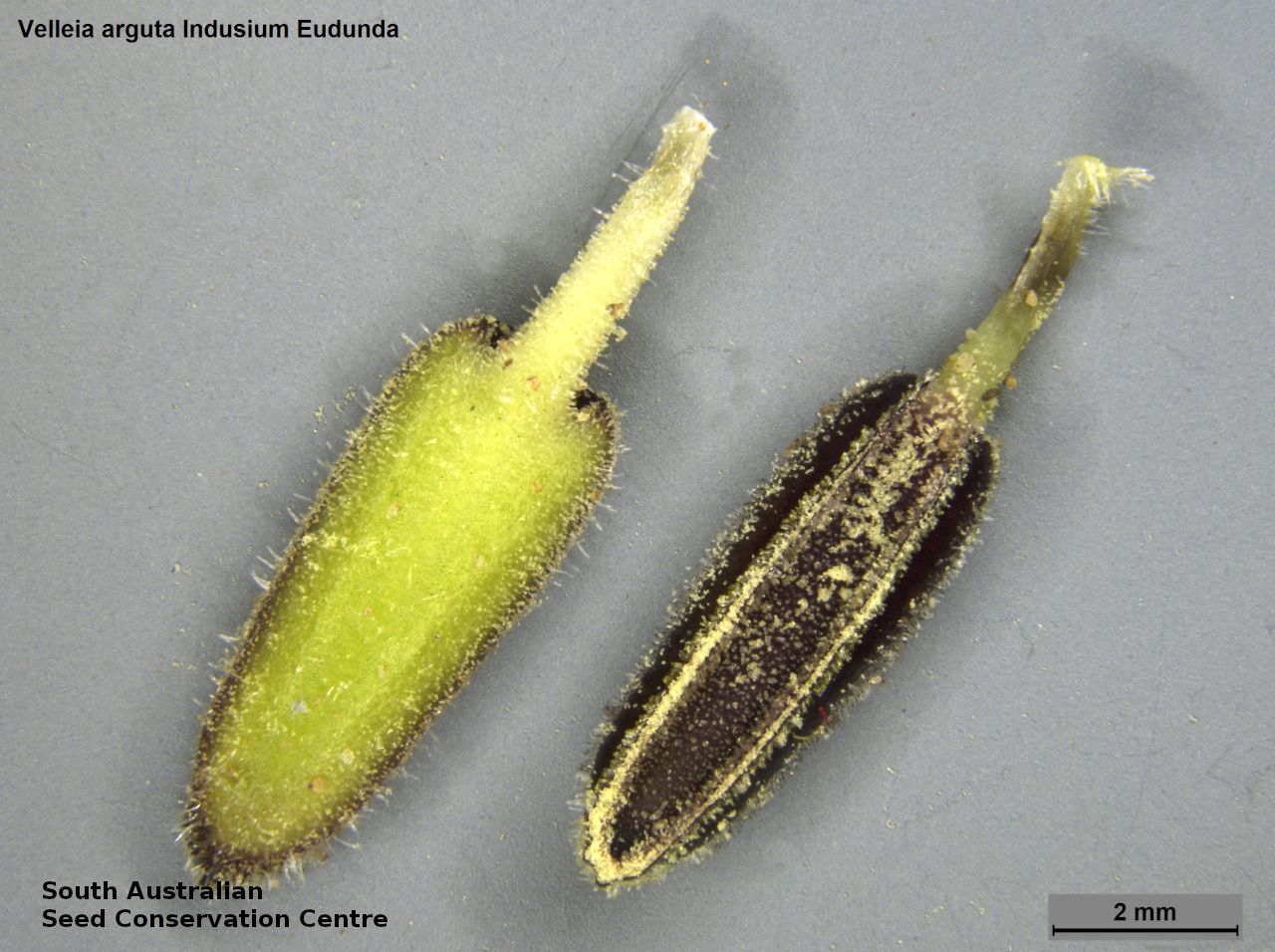

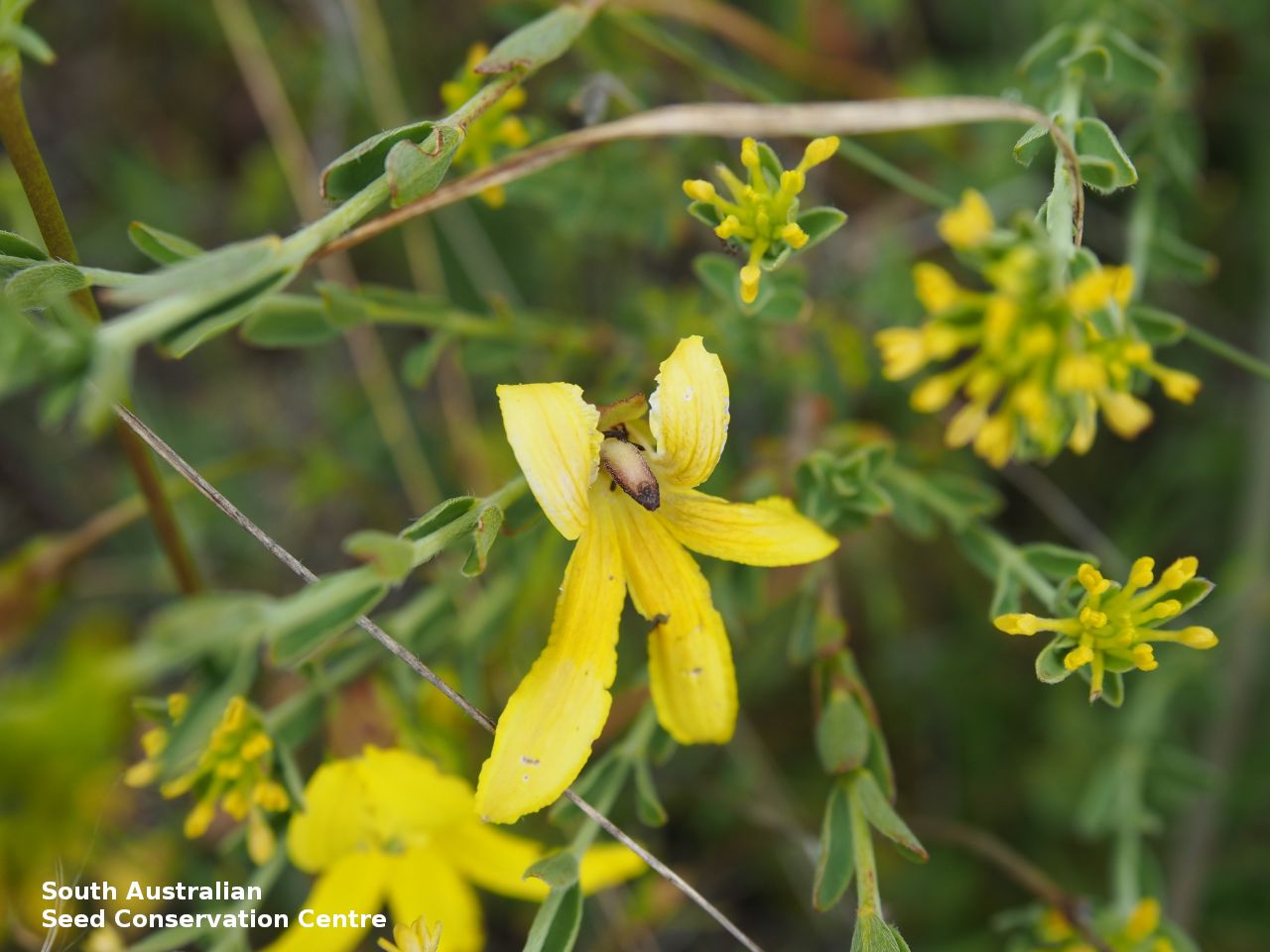
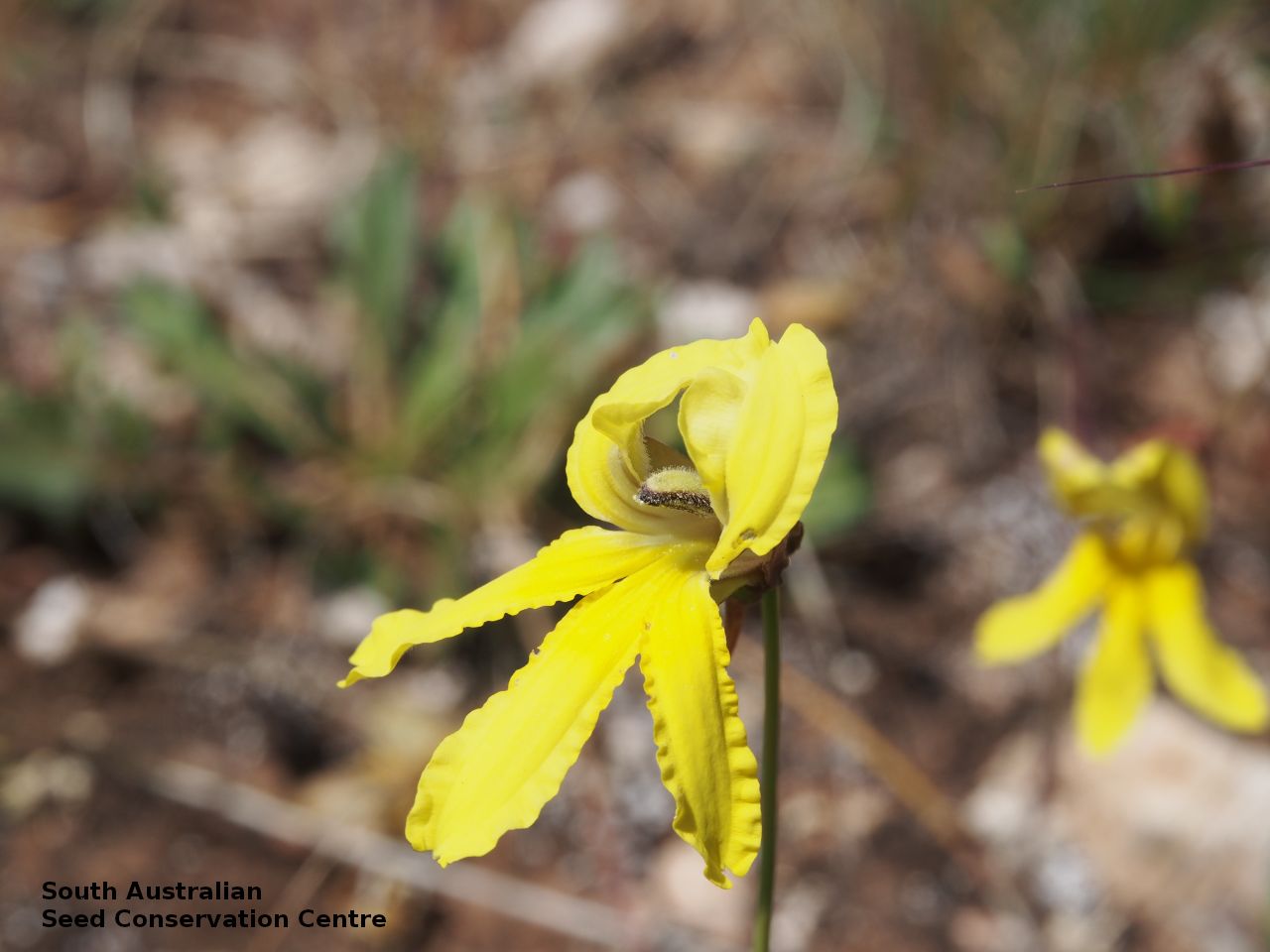
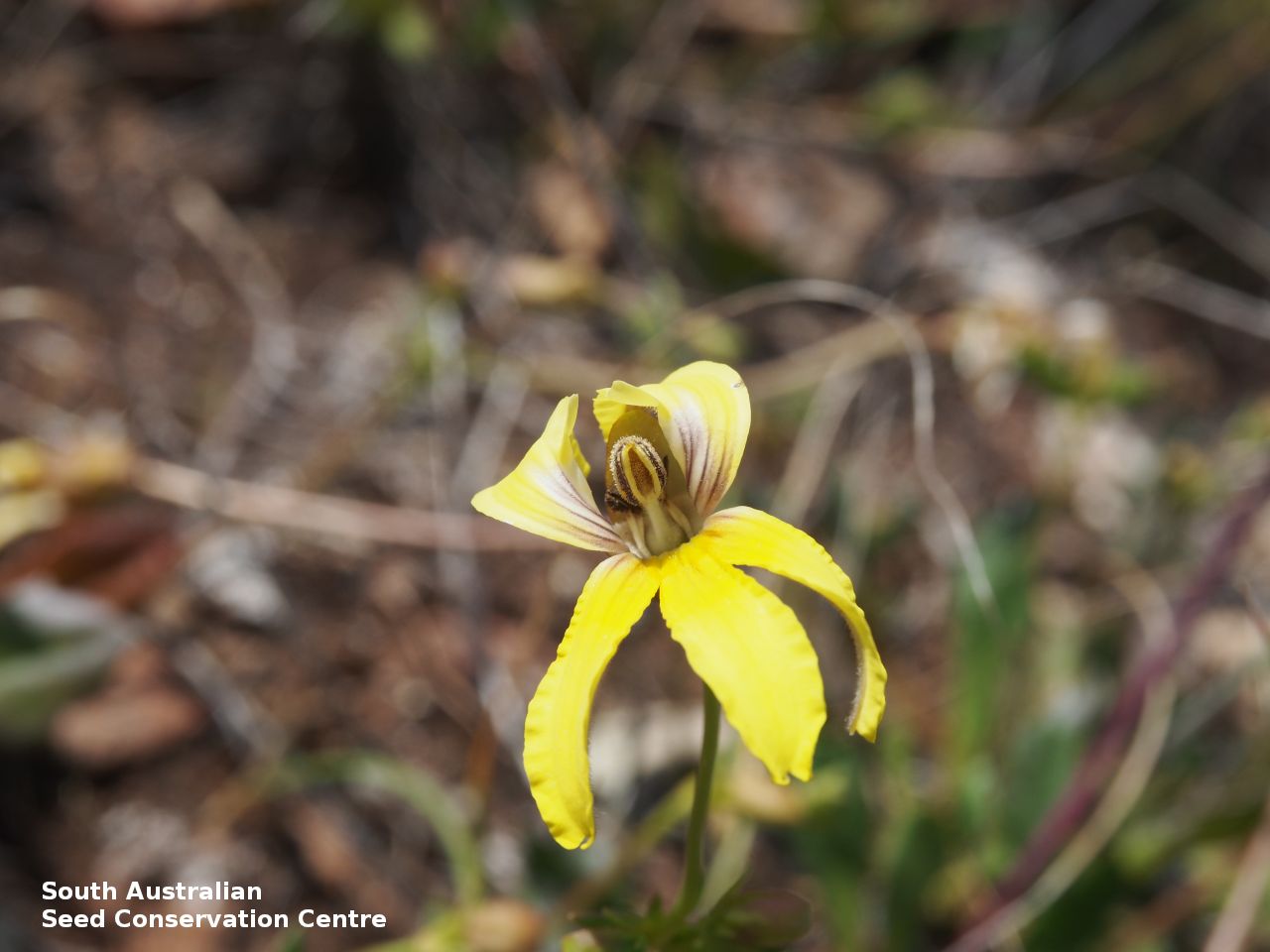
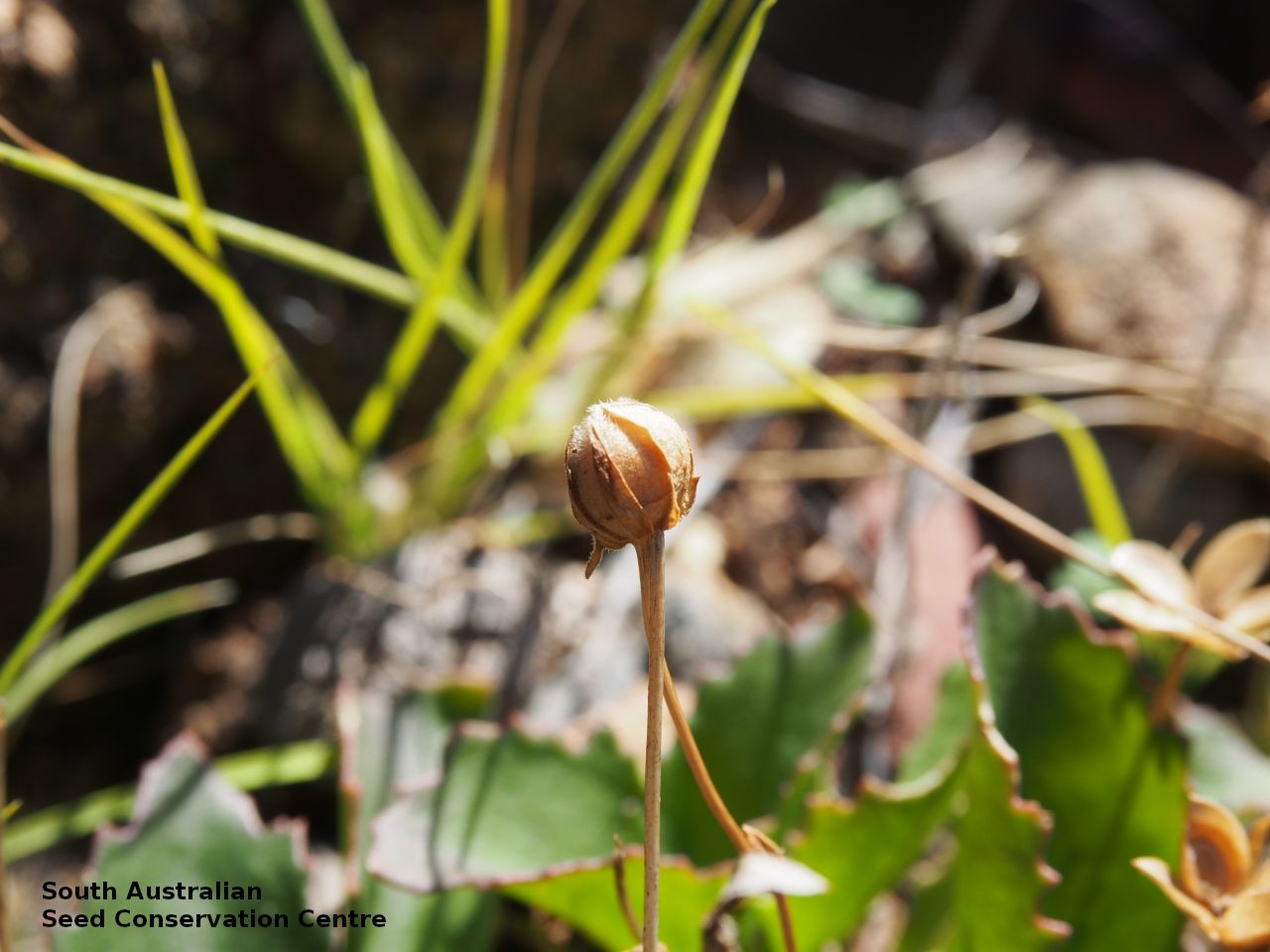
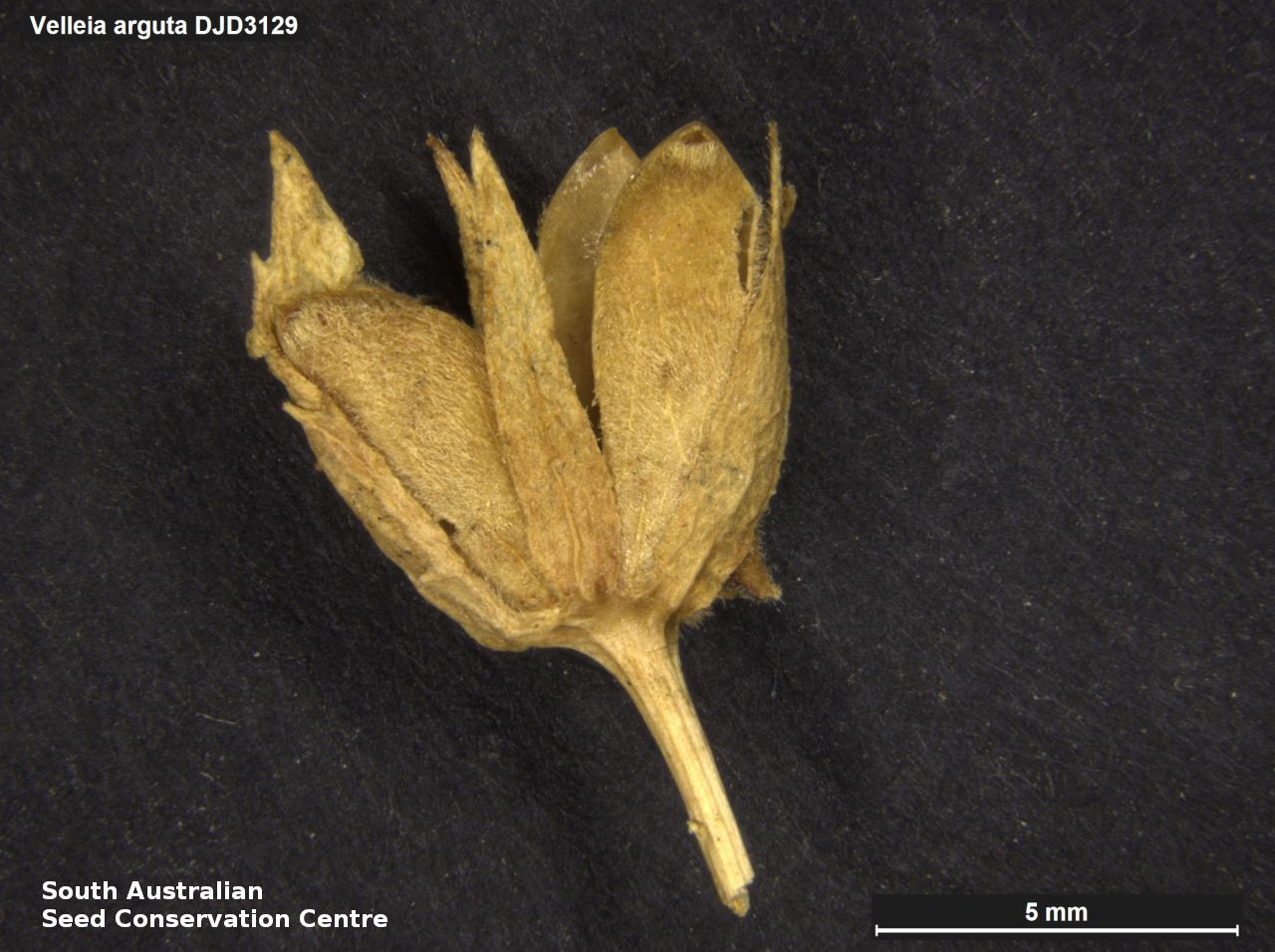
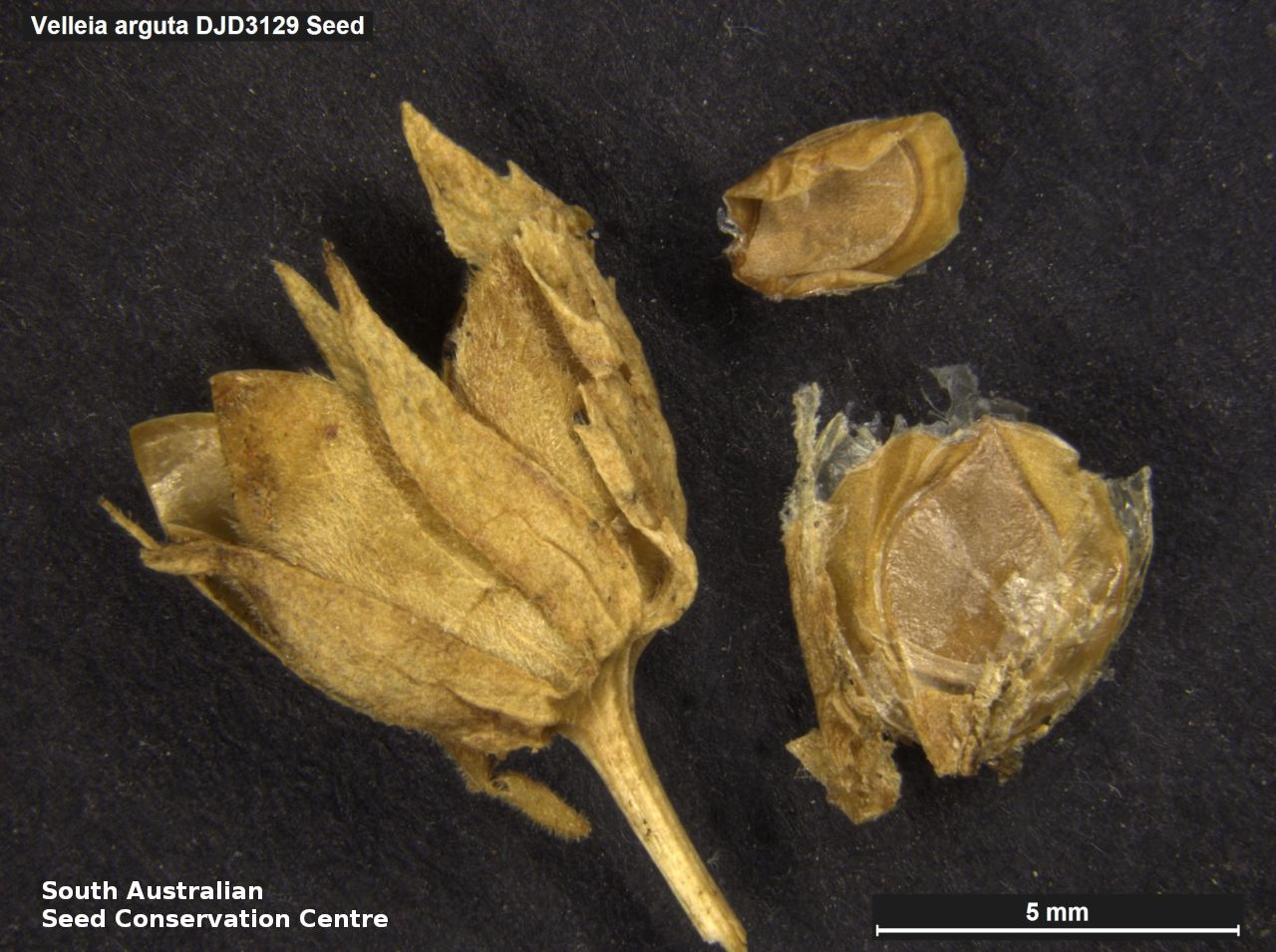
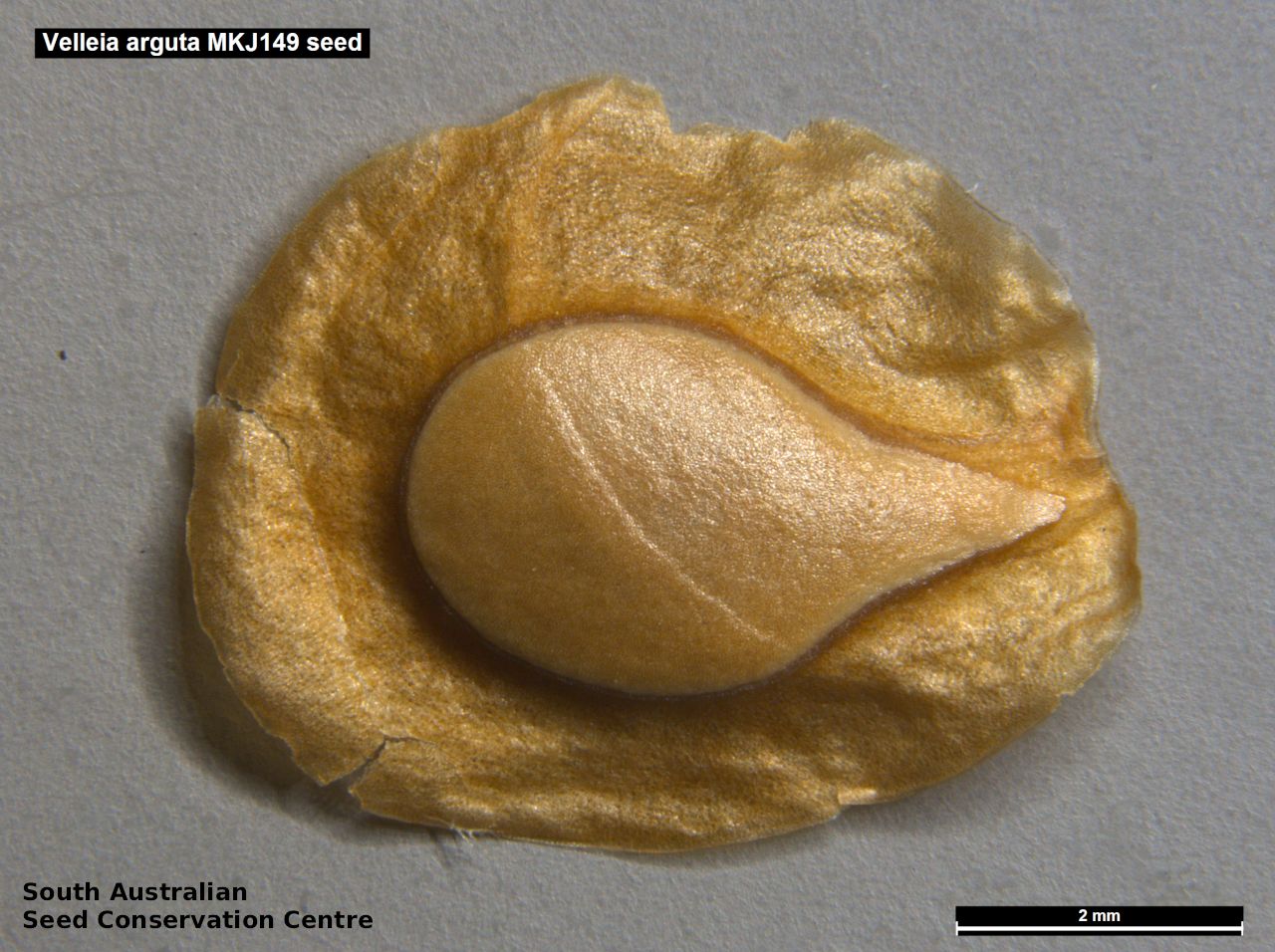
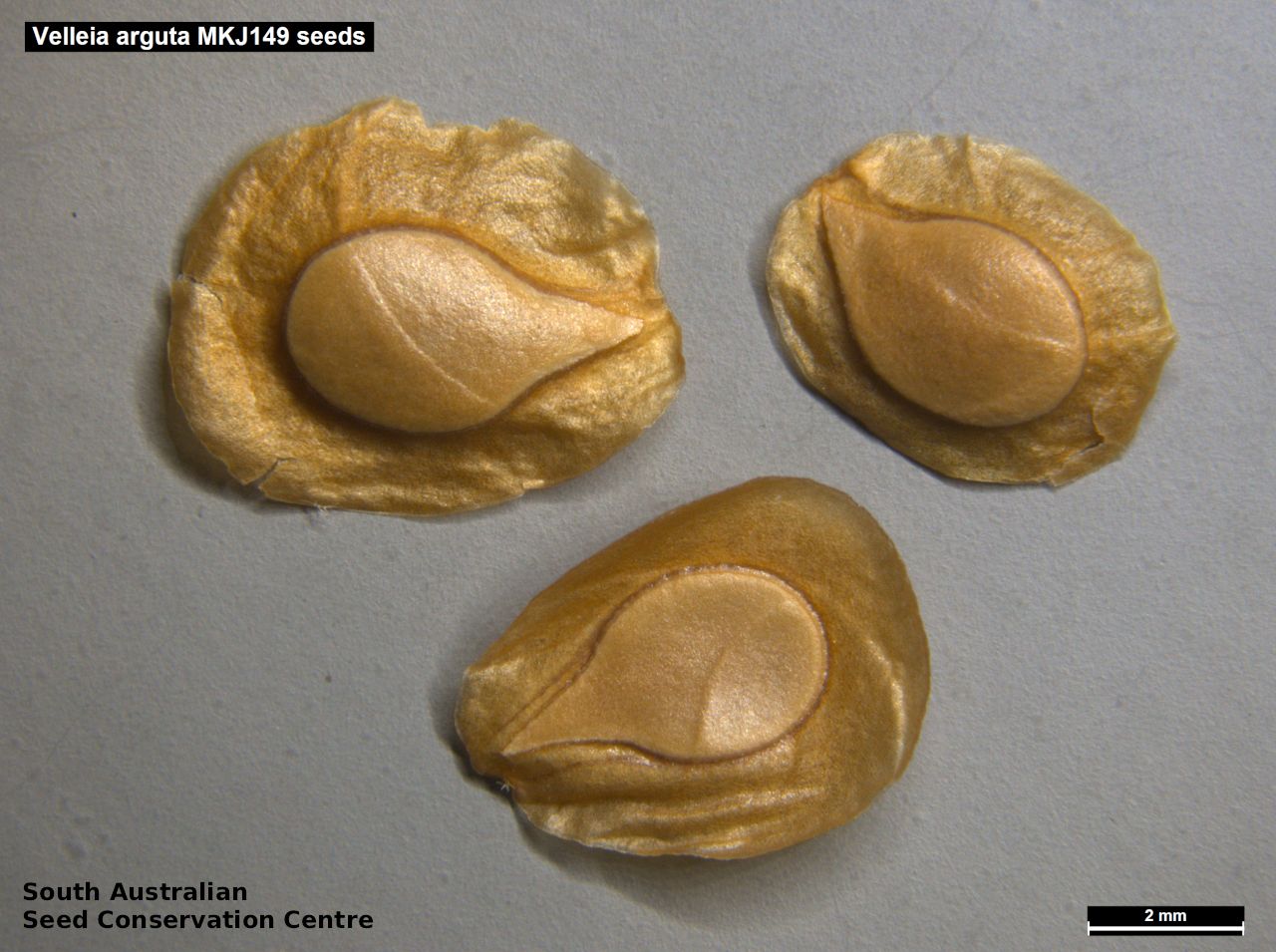

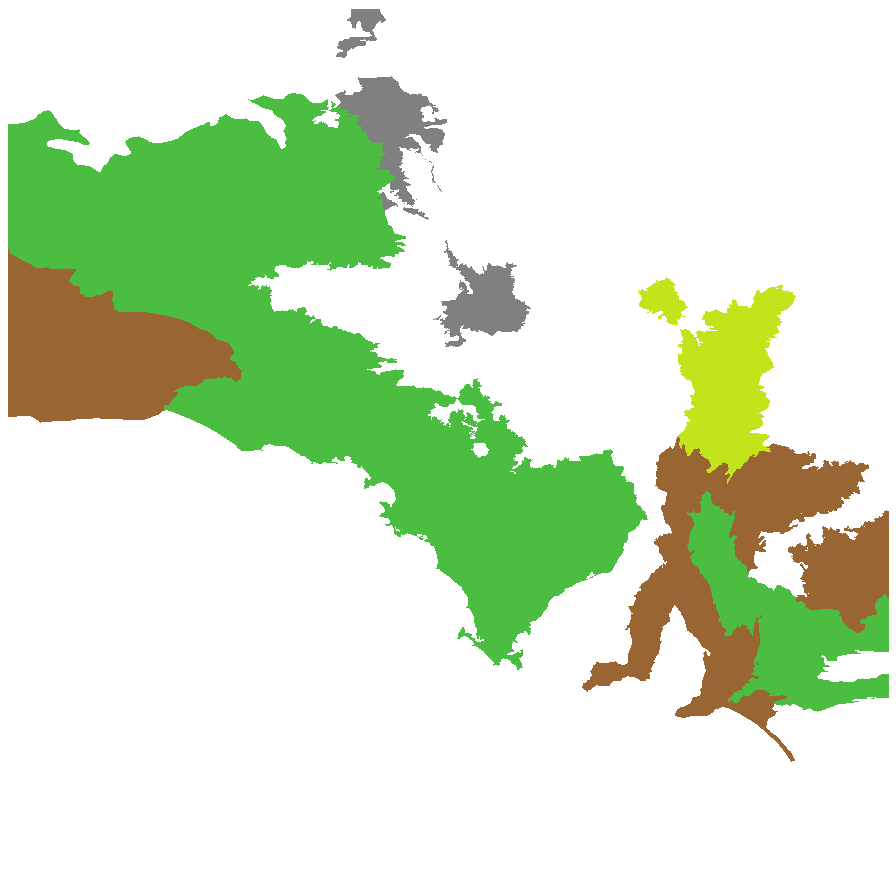
Botanical art
Prior names
Velleia arguta
Velleia paradoxa, partly
Antherostylis calcarata
Common names
Spur Velleia
Toothed Velleia
Etymology
(formally Velleia named after Thomas Velley (1748-1806), and English botanist). Arguta meaning sharp toothed; referring to the species serrated leaves.
Distribution and status
Grows in drier regions in mallee on sandy soils and rocky sites and found across most part of South Australia except the southeast and northeast regions. Also found in Western Australia, New South Wales and Victoria. Native. Common in South Australia. Rare in Victoria. Uncommon in the other states.
Herbarium regions: North Western, Lake Eyre, Nullarbor, Flinders Ranges, Eastern, Eyre Peninsula, Northern Lofty, Murray, Yorke Peninsula, Southern Lofty, Green Adelaide
AVH map: SA distribution map (external link)
Plant description
Perennial herb with a robust woody rootstock. Leaves oblanceolate to elliptic, serrate to deeply incised, glabrous or slightly pubescent towards the margin, to 12 cm long and 10 mm wide forming a rosette. Inflorescence a scape to 40 cm high. Flowers on a long spur, corolla deep yellow, brownish towards the throat. Flowering between July and January. Fruits are brown ovoid, 4-valved capsule to 9 mm long, densely pubescent with a glabrous mucro. Seeds are pale brown, semi-flat, broad-elliptic seed to 4 mm diameter, pointy at the base and with a winged around margin. Seed embryo type is spatulate fully developed.
Seed collection and propagation
Collect seeds between October and February. Collect capsules that are maturing, turning brown, easily split open and with brown seeds inside. Place the capsules in a tray and leave to dry for a week. Then rub the capsules with your hands to dislodge the seeds. Use a sieve to separate the unwanted material. Store the seeds with a desiccant such as dried silica beads or dry rice, in an air tight container in a cool and dry place. From two collections the seed viability were high, ranging from 95% to 100%.
| Location | No. of seeds (weight grams) | Number of plants | Date collected | Collection number Collection location | Date stored | % Viability | Storage temperature |
|---|---|---|---|---|---|---|---|
| BGA MSB | 2,600 (14.5 g) 2,600 (14.5 g) | 100+ | 16-Nov-2005 | MKJ149 Northern Lofty | 1-Aug-2006 | 95% | -18°C |
| BGA | 970 (5.2 g) | 50+ | 2-Dec-2010 | DJD2060 Murray | 1-Jan-2012 | 100% | -18°C |
| BGA | 500 (2.511 g) | 3-Dec-2022 | DJD4139 Flinders Ranges | 20-Jun-2023 | 90% | -18°C |
Number of plants: This is the number of plants from which the seeds were collected.
Collection location: The Herbarium of South Australia's region name.
% Viability: Percentage of filled healthy seeds determined by a cut test or x-ray.